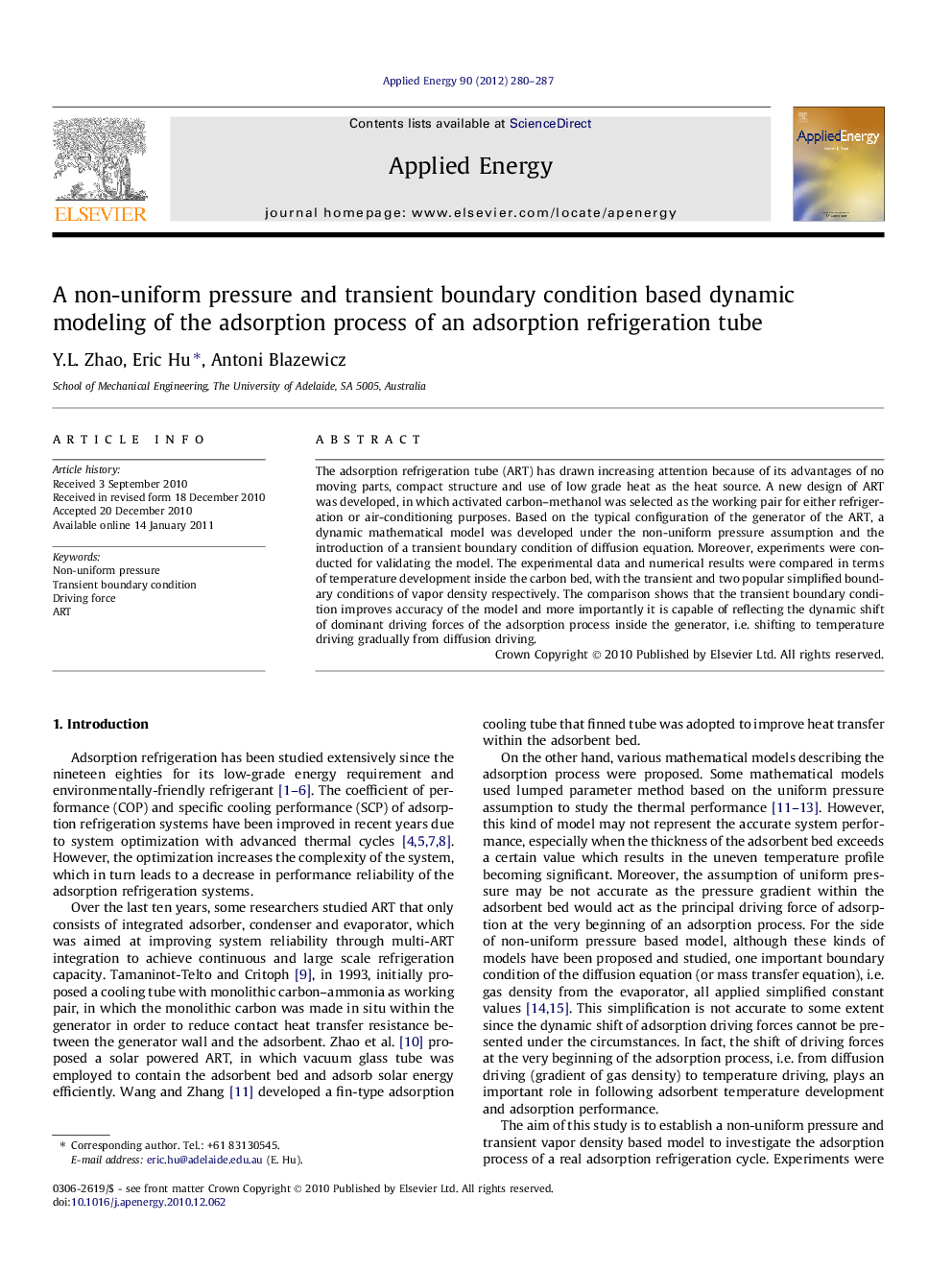| Article ID | Journal | Published Year | Pages | File Type |
|---|---|---|---|---|
| 243936 | Applied Energy | 2012 | 8 Pages |
The adsorption refrigeration tube (ART) has drawn increasing attention because of its advantages of no moving parts, compact structure and use of low grade heat as the heat source. A new design of ART was developed, in which activated carbon–methanol was selected as the working pair for either refrigeration or air-conditioning purposes. Based on the typical configuration of the generator of the ART, a dynamic mathematical model was developed under the non-uniform pressure assumption and the introduction of a transient boundary condition of diffusion equation. Moreover, experiments were conducted for validating the model. The experimental data and numerical results were compared in terms of temperature development inside the carbon bed, with the transient and two popular simplified boundary conditions of vapor density respectively. The comparison shows that the transient boundary condition improves accuracy of the model and more importantly it is capable of reflecting the dynamic shift of dominant driving forces of the adsorption process inside the generator, i.e. shifting to temperature driving gradually from diffusion driving.
